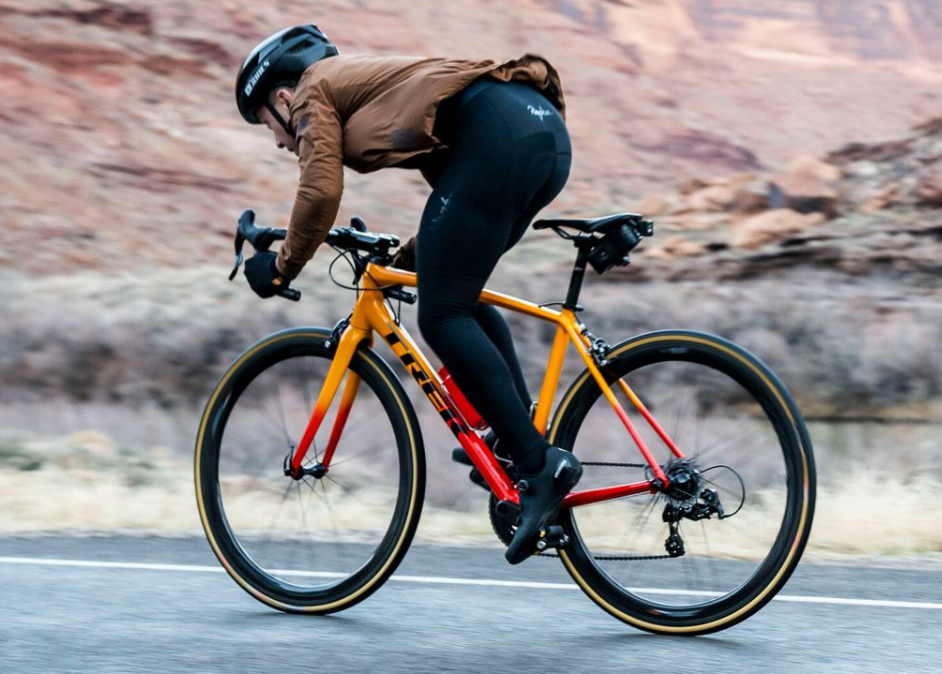Aluminum alloy frame, with the advantages of light weight, good elasticity, and good resistance to moisture oxidation, is currently the mainstream material for road bicycle. It is also the most common material on the market at present. The entry-level advanced models are mostly made of aluminum alloy material, with the advantages of light weight, optimal hardness and rigidity in a short period of time, and no rusting. However, the disadvantage is that there is almost no elasticity, which easily conveys ground vibration and sacrifices comfort. Currently, half of the road bicycles on the market are mainly made of aluminum alloy. Some mid to high-end sports and race grade bicycles are mainly made of carbon fiber, while some long-distance and other special purpose bicycles are made of steel and titanium (alloy). If your budget is limited and you don’t use it for off-road and mountainous terrain, just for riding on gentle roads, cities, and other similar activities, aluminum alloy is sufficient. Today, we’re introducing you to the top 5 best aluminum road bike brands for 2024!

Advantages & Disadvantages Of Aluminum Road Bikes
Advantage
- Lighter
- Good repairability
- Good strength
Disadvantage
- Transmitted the vibrations to people
- Less comfortable than other materials
Top Aluminum Vs Entry-Level Carbon Aluminum Road Bikes
Next, let’s compare “entry-level carbon” and “top-level aluminum” in several aspects:
Rigidity: Carbon fiber products have the characteristics of low specific gravity (density), high specific strength (unit weight strength), and high specific modulus (unit weight modulus). Simply put, if carbon fiber has the same weight as aluminum alloy products, then the strength of carbon fiber is much higher than that of aluminum alloy products.
T700 Dongli carbon fiber, commonly used for making bicycle carbon fiber frames, has an elastic modulus of approximately 210000Mpa
At room temperature, the elastic modulus of the commonly used 6-series aluminum alloy for bicycle frames is about 72GPa=72000Mpa
The elastic modulus is often a parameter used to measure rigidity, and the data shows that carbon fiber is about three times stronger in rigidity than 6-series aluminum alloys. This is determined by the material itself, not about top-level or entry-level matters.
Fatigue resistance: The fatigue resistance of aluminum alloy frames is relatively poor, which means that over time, the strength of the frame will deteriorate. The fatigue resistance of carbon fiber is relatively excellent, and the progress of prosthetics also benefits from this.
Appearance: The bonding area of aluminum alloy materials usually leaves traces due to welding, resulting in a relatively rigid and rigid shape. Carbon fiber products are formed from carbon fiber cloth and resin in molds, which can shape various shapes without welding marks.
Weight: The weight difference between entry-level carbon fiber and top-level aluminum alloy frames is not much, which can be considered equivalent. For highway vehicles, entry-level carbon fiber, such as JAVA bare frames, is around 1200 grams, while for Trek ALR top-level aluminum alloy, it should be around 1100 grams. While ensuring rigidity, entry-level carbon fiber maintenance frames need to be heavier, but the difference is not significant.
Durability: Some people say that carbon fiber has a lifespan of only 3 to 4 years, while aluminum alloy can last for more than ten years. I looked at my friend’s TCR and calmly said, ‘This is a rumor.’. Someone once again said that carbon fiber is formed in one go and is scrapped as long as it hits a single point, while aluminum alloy is different What’s different about aluminum alloy? The local tensile strength of aluminum alloy sheets is poor, and if there are dents formed by impact, it will greatly affect the rigidity and strength. Even if it is necessary to repair, the original rigidity and strength will not be restored. The repair process is prone to sudden changes, which can lead to cracks, and then it will truly be completely scrapped. Moreover, aluminum has a low melting point, unlike steel, welding is sufficient, and of course, it is not impossible to weld. Carbon fiber, on the other hand, has small area fractures in some areas. You can buy carbon cloth and repair it yourself, or find a professional to repair it. It can also repair the paint surface. After the repair is completed, the weight will increase slightly, and in terms of strength, proper repair will also enhance.
Comfort: To be honest, this is quite important. Aluminum frames can cause severe bumps on some sections of the road with poor conditions. In contrast, the cushioning of the carbon frame is really comfortable.
5 Best Aluminum Road Bikes in 2024
We have compiled the 5 best aluminum alloy road bicycles for 2024, and based on market sales and consumer feedback, we have selected these 7 valuable ones. We believe you will definitely find the one you like.
- Decathlon RC100 light weight racing and variable speed Triban100 road bicycle
- RALEIGH UK Lanling aluminum alloy road bike, male and female students, adult dual disc brake, disc brake, Shimano variable speed light racing car
- XDS road bike RX200/RC200 sports fitness brake integrated Simano 14 speed U-brake racing aluminum alloy bicycle
- Jeep (JEEP) road bike, mountain boy and girl student disc brake, variable speed bicycle, corner handle
- PHILLIPS Road Bike Men’s and Women’s Turn Racing Travel Adult Variable Speed Breaking Wind Fitness City Work Cycling Disc Brakes Road Racing Bike

